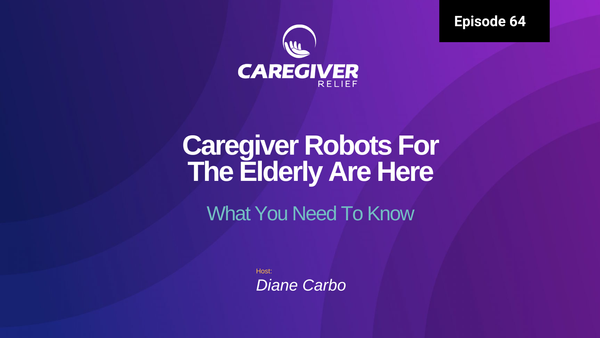What is Covered in Medicare Part A?

Medicare Part A is an important part of the overall Medicare program, administered by the Centers for Medicare and Medicaid Services (CMS). Part A provides coverage for inpatient hospital stays, skilled nursing care, hospice services, and home health care.
For those 65 and older, Part A coverage is provided premium-free after they have paid into the system through payroll taxes during their working years. People with disabilities, as well as those diagnosed with End-Stage Renal Disease, may also be eligible for Part A coverage. It is important for everyone to understand what Medicare Part A covers, how much it costs, how to apply for it, and any limitations or exceptions that may apply.
In this guide, we will look at the history of Medicare Part A, what is covered under Part A, who is eligible for coverage, the cost associated with Part A, how to apply for it, and any limitations of Part A. We will then take a look at who is responsible for administering Part A and how other parts of Medicare work with or without Part A. Finally, we will discuss any variations in coverage between states.
By the end of this guide, readers will have a better understanding of the Medicare Part A program, the services it covers, and who is eligible for it.
History of Medicare Part A
Medicare Part A is a form of health insurance provided by the United States government that covers hospital stays, inpatient care, and certain limited outpatient services. It is available to individuals over the age of 65 and those with certain disabilities. Part A was first introduced in 1965 as part of the Social Security Amendments of 1965. Originally, Part A was intended to cover the costs of medical care for those over 65, but it has since evolved to become an integral part of America’s healthcare system.
In 1972 Medicare Part A was expanded to include coverage for home health services. In 1983, Medicare Part A was expanded to cover hospice care for those with terminal illnesses. In 1986, Part A was further expanded to cover care provided by rural health clinics and federally qualified health centers. These changes have made Medicare Part A an important part of healthcare for those over 65 and those with certain disabilities.
What Is Covered Under Medicare Part A?
Medicare Part A is an important healthcare plan that covers a number of services, including hospital stays, doctor visits, hospice services, and home health care. These services are vital to ensuring that you are receiving the medical care you need in the event of an emergency or illness.
Hospital Services
Medicare Part A covers inpatient services like semi-private rooms, meals, general nursing, operating and recovery room, drugs, and other hospital services and supplies. It also covers inpatient care in psychiatric and long-term acute care hospitals. These services are only covered when they are medically necessary.
Physician Services
Physician services are also covered under Medicare Part A. These include diagnostic tests, preventive screenings, and evaluation services. Medicare will also cover necessary physician services related to your hospital stay, such as those provided by a doctor in the emergency room or intensive care unit.
Hospice Services
Hospice services are covered under Medicare Part A for people with a qualifying terminal illness. These services include physical, emotional, and spiritual support, as well as pain relief medications and short-term care for illnesses related to the terminal illness.
Home Health Services
Medicare Part A also covers home health services. This includes part-time or intermittent skilled nursing care, physical therapy, speech-language pathology services, and occupational therapy. The services must be prescribed by your doctor and provided by a Medicare-certified home health agency.
By understanding what services are covered under Medicare Part A, you can be better prepared for any healthcare needs you may have in the future.
Who Is Eligible for Medicare Part A?
Medicare Part A is an important health insurance program for those aged 65 and over, as well as people with disabilities and those suffering from End-Stage Renal Disease (ESRD). Medicare Part A eligibility is important for those who need access to medical care but are unable to pay for it out of pocket.
The eligibility requirements for Medicare Part A are straightforward and all applicants must meet them. To be eligible for Medicare Part A, you must:
- Be 65 years or older
- Be a US citizen or permanent resident
- Have worked for at least 10 years in the US and paid taxes during that time
- Be receiving Social Security or Railroad Retirement Board benefits
- Have certain disabilities or End-Stage Renal Disease
To help those with disabilities, the Social Security Administration has implemented programs such as work incentives, which allow those with disabilities to keep their Medicare Part A coverage despite having an income. People with ESRD can also obtain Medicare Part A coverage if they have a Bachelor’s Degree or higher and are actively enrolled in school.
It is important to note that once you become eligible for Medicare Part A, you do not need to keep up with your qualifications for future years. Medicare Part A enrollment comes with a lifetime guarantee.
The cost of Medicare Part A coverage can vary based on individual circumstances, but the good news is that it’s usually free for everyone who has worked and paid taxes in the United States for at least 10 years. The premiums are based on income – higher earners will pay more than lower earners, and there are also additional premiums that come with certain Medicare Advantage or Supplemental Plans.
For those who do need to pay a premium for Part A, the amount depends on how long you worked and paid taxes. Generally, premiums range from $252 to $458 per month. There are also deductibles, copays, coinsurances, and other out-of-pocket costs associated with Part A.
Fortunately, there are some ways to reduce the cost of Medicare Part A. People who have Medicare Savings Programs (MSP) may be able to get help covering the cost of premiums, deductibles, and coinsurances. Those who qualify for Medicaid may also be able to get help with costs. Lastly, getting private supplemental insurance plans can help relieve some of the financial burden associated with Part A.
It’s important to understand the cost of Medicare Part A and the different ways to reduce the cost, so you can make an informed decision when it comes to your healthcare.
How To Apply for Medicare Part A
Applying for Medicare Part A can be a simple process if you know the right steps. Follow this step-by-step guide to apply for Medicare Part A and get started with your coverage:
- Determine eligibility: The first step in applying for Medicare Part A is to determine if you are eligible for coverage. Generally, you are eligible for Medicare Part A if you are 65 or older, disabled, or have end-stage renal disease (ESRD). You must also be a US citizen or permanent resident who has lived in the US for at least five years.
- Gather required documents: To apply for Medicare Part A, you will need to provide documentation such as proof of age or disability, proof of US citizenship/residency, and Social Security numbers. You may also need to provide tax statements from previous years.
- Apply online: You can apply for Medicare Part A online through the Social Security Administration’s website. This is the easiest and most convenient way to apply for Medicare Part A. You will need to provide all the required documents in order to complete the online application.
- Apply by mail or in person: You can also apply by mail or in person at your local Social Security office. When applying by mail, you will need to fill out the Form SSA-10, which is available on the Social Security Administration’s website. When applying in person, you can get help from a representative at the Social Security office.
Once you have applied for Medicare Part A, it can take up to three months for your coverage to start. During this time, the Social Security Administration will review your application to make sure you are eligible for the coverage. If you are approved, you will receive a Medicare card in the mail with your personalized Medicare number that you can use to access your benefits.
You should never have to pay anything to apply for Medicare Part A. If you are asked to pay money to apply, it could be a sign of fraud or an attempt to access your personal information. Be sure to report any suspicious activity to the Social Security Administration.
By following this guide on how to apply for Medicare Part A, you can ensure that you will quickly and safely begin receiving your Medicare coverage.
Medicare Part A covers a wide variety of healthcare services, but it does not cover everything. Some of the most common limitations include:
• Not all medical treatments and procedures are covered. Medicare Part A does not cover routine vision or dental care, long-term nursing care, cosmetic surgery, or hearing aids.
• There may be limits to coverage for certain services. For example, Medicare Part A covers only a limited number of home health visits per year.
• The cost of deductibles, copayments, and coinsurance may add up over time. Even though Medicare Part A has no premiums, beneficiaries still need to pay deductibles, copays, and coinsurance when they receive services.
• Medicare Part A does not cover prescription drugs. This is why many people opt for supplemental insurance plans like Medicare Part D.
• Medicare Part A does not cover long-term care or custodial care. This type of care is usually provided in a nursing home or assisted living facility and is paid for out-of-pocket (or by a long-term care insurance policy).
When it comes to accessing healthcare, Medicare Part A is an essential benefit that provides coverage for many people over the age of 65. However, it is important to understand the limitations of Part A as well as other supplemental insurance options that can help fill the gaps in coverage.
Medicare Part A is administered by the Centers for Medicare & Medicaid Services (CMS) and overseen by the United States government. CMS assists in enrolling Medicare Part A participants, processing claims, and providing general customer service to Medicare beneficiaries.
Medicare Part A coverage is provided through Point-of-Service providers. These can be doctors, hospitals, skilled nursing facilities, home health agencies, and hospice care facilities. Medicare Part A requires that these providers have a contract with CMS in order to provide insured services.
It is important to note that not all medical services provided are covered by Medicare Part A. Certain services, such as cosmetic surgery, may not be covered. You should always talk to your healthcare provider about what is and isn’t covered under your particular plan.
The best way to determine whether a specific medical service or treatment is covered is to ask your doctor or healthcare provider. Additionally, you should always check with your insurance provider to make sure the services are covered under their plan.
Medicare consists of four parts: A, B, C and D. Each part provides different types of coverage for beneficiaries.
Part A covers inpatient hospital care and skilled nursing facilities. Part B covers services provided by doctors and other health care professionals, such as laboratory tests, medical equipment, outpatient care, home health services and some preventative services. Part C includes both Part A and Part B, and is offered through private insurance companies that contract with Medicare. Part D covers prescription drugs and is also offered through private insurers.
In order to receive benefits from Part A, you must pay a small monthly premium. This premium is automatically deducted from your Social Security check, if you are eligible to collect. There is no additional cost if you are eligible to receive Part B benefits. For Parts C and D, you will need to contact your insurance provider for more information on premiums and any other out-of-pocket costs.
It’s important to understand how all four parts of Medicare work together so you can get the most out of your coverage. Part A benefits can be used before Part B and Part C. However, if you have both Parts A and B, part B may cover some of the services left out by Part A. Part C is an option if you don’t want to use Part B and instead would like to have additional coverage. Part D is always optional and you can choose whether or not to include it in your plan.
No matter which parts of Medicare you choose, all four parts work together to provide an important safety net for those who are eligible. Understanding the benefits available to you through each part can help you make informed decisions and get the most out of your coverage.
Medicare Part A is an important part of our healthcare system and it provides coverage to some of the more vulnerable members of society, such as people over 65 and those with disabilities. However, the coverage may vary from state to state, so it's important to make sure you know what is covered in your state and how it compares to other states.
The coverage may be slightly different across states due to the requirements set out by Medicare and the state Medicaid programs. Depending on where you live, some benefits available under Medicare Part A may not be offered in your state. For example, some states may not cover hospice care or home health care under the Medicare Part A plan. It is therefore essential that you check with your local Medicare or Medicaid offices for information about what benefits are covered in your state.
Other differences may include the cost of services covered under Part A. Different states may have different copays, coinsurances, and deductibles which can affect the amount you pay out of pocket for services. It may also be worth comparing your own state’s coverage to other states if you are planning to move or travel.
Finally, the availability of certain services may vary by state. Medicare Part A provides access to different types of services, but the availability of these services and the level of access may be different depending on the state you are in. It is therefore worth looking into the services available in your state and finding out which providers offer them.
In conclusion, Medicare Part A is an important healthcare program and its coverage varies across states. To ensure that you are receiving the maximum benefits, it is important to familiarize yourself with the type of coverage provided by your state and to compare it to other states. Additionally, it is important to examine the cost of services, the availability of certain services, and the providers who offer them.
Medicare Part A is an essential health insurance program for citizens aged 65 and over, as well as those with disabilities and end-stage renal disease. The program was created to provide much needed coverage for medical expenses relating to hospitalization and home health care.
The coverage provided by Medicare Part A is extensive and includes hospital stays, doctor visits, hospice services, and home health care. It helps cover costs for inpatient care in hospitals as well as skilled nursing facility care, home health care, and hospice care. Medicare Part A also covers specific medical equipment, such as wheelchairs and hospital beds used at home.
By having Medicare Part A, individuals can rest assured that they will not have to bear the burden of expensive bills associated with medical treatments, especially those relating to hospital visits. This not only gives peace of mind but it also helps provide security and assistance for those who need it the most.
Having Medicare Part A can significantly reduce the stress and financial worries that so many people face when dealing with medical expenses. It is an invaluable part of our healthcare system that helps protect the elderly, the disabled, and those suffering from end-stage renal disease. Knowing that these people have access to healthcare coverage gives us all peace of mind and provides them with a sense of security.
You might also like this article:






